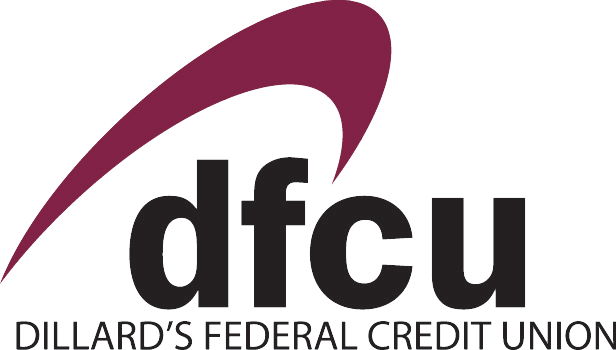The Credit Union Difference
The main differences between a bank and Dillard’s Federal Credit Union lie in their ownership structure, operations, and priorities.
Business Structure and Profit Orientation:
Banks are for-profit corporations.
DFCU is a not-for-profit cooperative.
Ownership:
Banks are owned by shareholders. Shareholders are not required to have an account at the bank.
DFCU is owned by our members. All members have money on deposit at DFCU.
Purpose:
Banks’ primary purpose is to generate profits for their shareholders. They do this by selling financial products to their customers.
DFCU’s primary purpose is to serve our members’ financial needs, focusing on providing competitive rates on savings and loans without aiming for profit maximization.
Customer Base:
Banks serve anyone who meets their account-opening requirements, which are generally straightforward.
DFCU serves our members. Members of all credit unions are individuals with a common bond; our common bond is Dillard’s.
Decision-Making:
Banks make decisions based on maximizing profits for shareholders.
DFCU makes decisions with our members' best interests in mind. We operate democratically, with members having voting rights in major decisions and the ability to elect our board of directors.
In summary, while both banks and DFCU offer similar financial services, the key differences lie in our respective business structure, profit orientation, ownership, purpose, customer base, and approach to decision-making.
Why did credit unions come into existence?
Credit unions came into existence primarily to address the financial needs of individuals who were often underserved or neglected by traditional banks. Their origins are rooted in the principles of mutual aid, community support, and cooperative economics. Here are some key reasons why credit unions were established:
1. Access to Credit for the Underserved
In the 19th and early 20th centuries, many individuals, especially those in rural areas or from working-class backgrounds, had difficulty accessing credit from traditional banks. Banks typically catered to wealthier clients and businesses, leaving many without the financial services they needed.
2. Mutual Support and Cooperative Principles
Credit unions were founded on the principles of mutual support and cooperation. Groups of individuals pooled their resources to create a cooperative financial institution where members could save money and access loans at reasonable rates. The idea was that by working together, members could achieve financial stability and growth.
3. Economic Empowerment
The cooperative model of credit unions aimed to empower members economically. By providing affordable financial services and promoting savings, credit unions helped members improve their financial well-being and gain more control over their financial futures.
4. Community Focus
Credit unions were often established to serve specific communities, whether geographic (e.g., a town or rural area) or based on common affiliations (e.g., workers in a particular industry). This community focus fostered a sense of belonging and trust among members, who knew that the credit union was dedicated to their collective well-being.
5. Response to Economic Hardships
Credit unions often emerged in response to economic hardships, such as during the Great Depression. During these times, traditional banks were failing or unwilling to lend, leaving many people without access to essential financial services. Credit unions provided a lifeline by offering a safe place to save money and access loans.
6. Alternative to Profit-Driven Banking
Credit unions provided an alternative to the profit-driven banking sector. By operating as non-profit cooperatives, credit unions could focus on serving their members' needs rather than maximizing profits. This often resulted in lower fees, better interest rates, and a more customer-centric approach.
Historical Context
The modern credit union movement traces its origins to mid-19th century Germany, where Friedrich Wilhelm Raiffeisen and Hermann Schulze-Delitzsch pioneered cooperative banking concepts. Raiffeisen established rural credit unions to help farmers, while Schulze-Delitzsch focused on urban workers and tradespeople. These early efforts laid the groundwork for the global credit union movement.
Conclusion
Credit unions were created to provide accessible, affordable, and community-focused financial services to individuals who were often overlooked by traditional banks. By emphasizing cooperative principles and mutual support, credit unions have played a vital role in promoting financial inclusion and economic empowerment.


